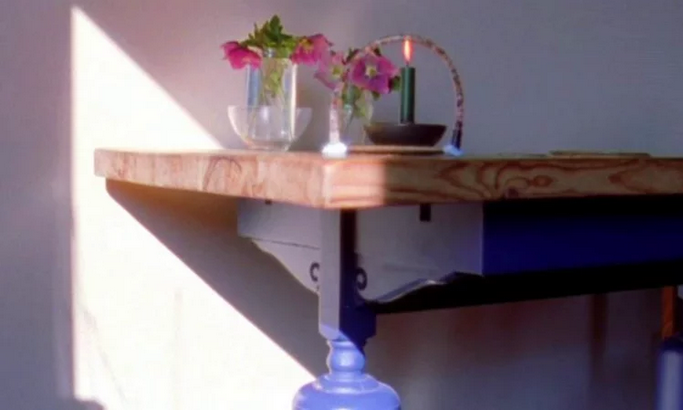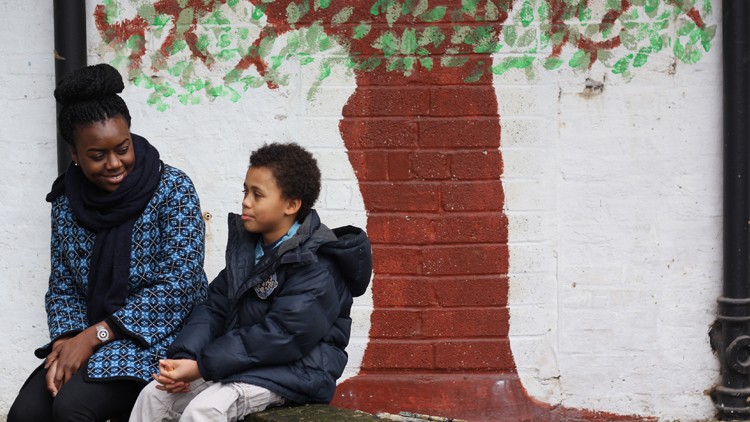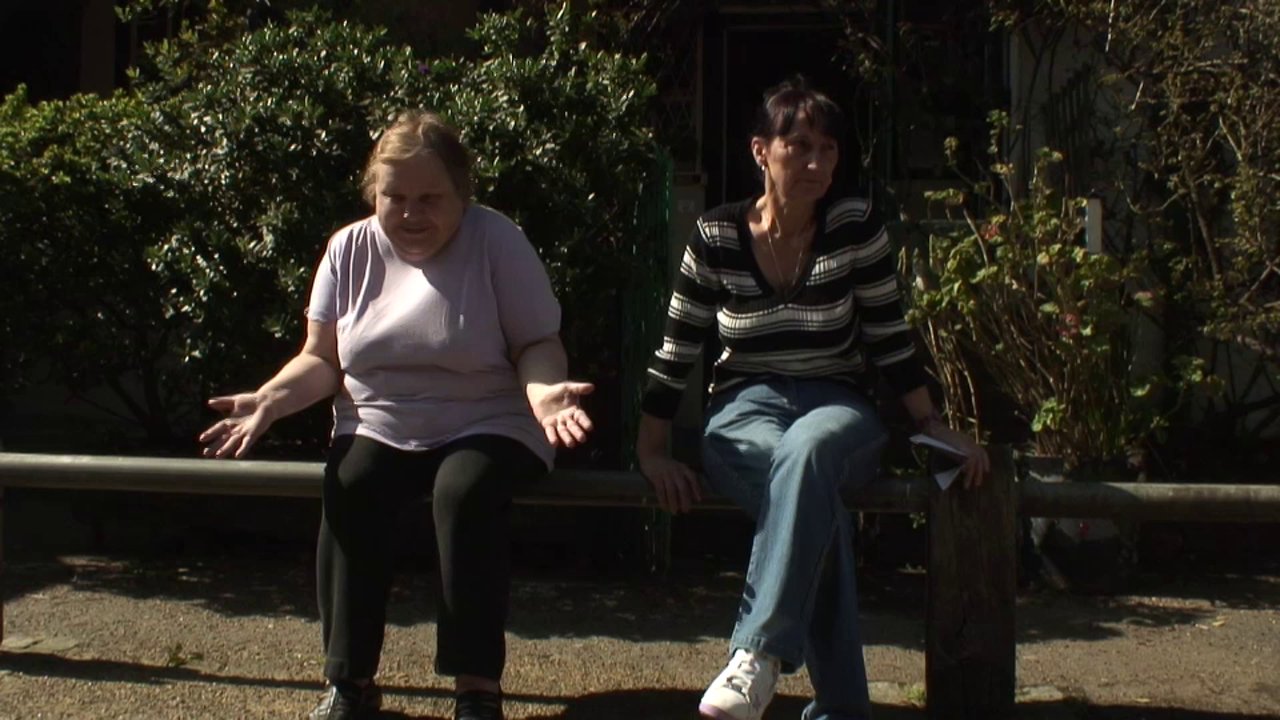Time:Distance and To the microphone, please (with Mrs Soprano)
2 December – 15 December
Holly Antrum
Time:Distance
2012, 11’48”
SYNOPSIS
The vivid pastoral scenes and colour screens in Time:Distance, oscillate between tapestry-like detail and abstraction, where film and digital subclips intersect and imitate. Marking a series of competing material transitions, temporal and spatial distance elide: the house, the London Marathon televised in the background, the churchyard with its graves and locals coalesce into a microcosm. The hand-chalked clocking of the sun and the pendulous swing of near-by church bells juxtapose physicality with decimal accuracy as attached to the ‘time:distance’ scale of a race – instead suggesting a bodily sense of observed duration through the use of a wind-up camera.
—-
Text courtesy of Holly Antrum
Holly Antrum with Rose O’Gallivan
To the microphone, please (with Mrs Soprano)
2013, 8’10”
.
SYNOPSIS
“The title Mrs Soprano, like the reference to the microphone evokes themes of presentation, performance, and specifically in the title Mrs Soprano refers to the common assumption of the presence of a voice within artworks. The artist is expected to have this ‘voice’ which is often audible in a certain pitch. The pitch becomes the tone or texture of the artwork whether light, earnest, dry, shrill, sombre. “
Extract from To the microphone, please (with Mrs Soprano): Holly Antrum and Rose O’Gallivan – Interview by Regina Barunke
Interview and Holly Antrum’s website here
Link to Rose O’Gallivan’s website here
MUSLIN TREE SCREEN
Muslin Tree Screen is an interactive browser based work that explores similar aesthetics to Antrum’s earlier print and film based works.
Available to view here
BIOGRAPHY
Holly Antrum (born 1983, London, lives and works in London) works in a variety of media, primarily 16mm film with affiliations to print and transfer mediums. She completed a two year film project, Catalogue with 93 year old artist Jennifer Pike who was also the wife and collaborator of sound poet Bob Cobbing. Her first solo exhibition and publication ‘A Diffuse Citizen’, was presented at Grand Union, Birmingham in June – July 2014. Catalogue also had solo screenings at Outpost, Norwich and Flat Time House, London in 2014 (Someone else can clean up this mess, Electra and Flat Time House). Other screenings and group exhibitions include ABC in Sound, Exhibition Research Centre, Liverpool, Muslin Tree Screen – Flatness.eu (flatness.eu/summer-2013), In the House of Mr and Mrs X, Temporary Gallery, Cologne (all 2013), Apropos the Kissing of a Hand, Festival Robert Walser, Newcastle-upon-Tyne, SV12, Studio Voltaire (all 2012), and New Contemporaries 2010. Her educational background includes MA Printmaking Royal College of Art in 2011, BA Fine Art Painting, Wimbledon College of Art (2005).
FILMOGRAPHY
Catalogue, 19 mins, (2012 – 14)
To the microphone please (with Mrs Soprano), 8.10 mins, (2013)
The Cure of Folly, 49.15 mins (2012)
Time:Distance, 11.30 mins (2011-12)
Rappel, 4.20 mins (2012)
Asides, 6.20 mins, (2011)
Movement in a Minor Familiar (Schubert Tape 5.30 mins (2010)
Once I knew a Room, Once I knew a Forest, 6.42 mins (2006)




